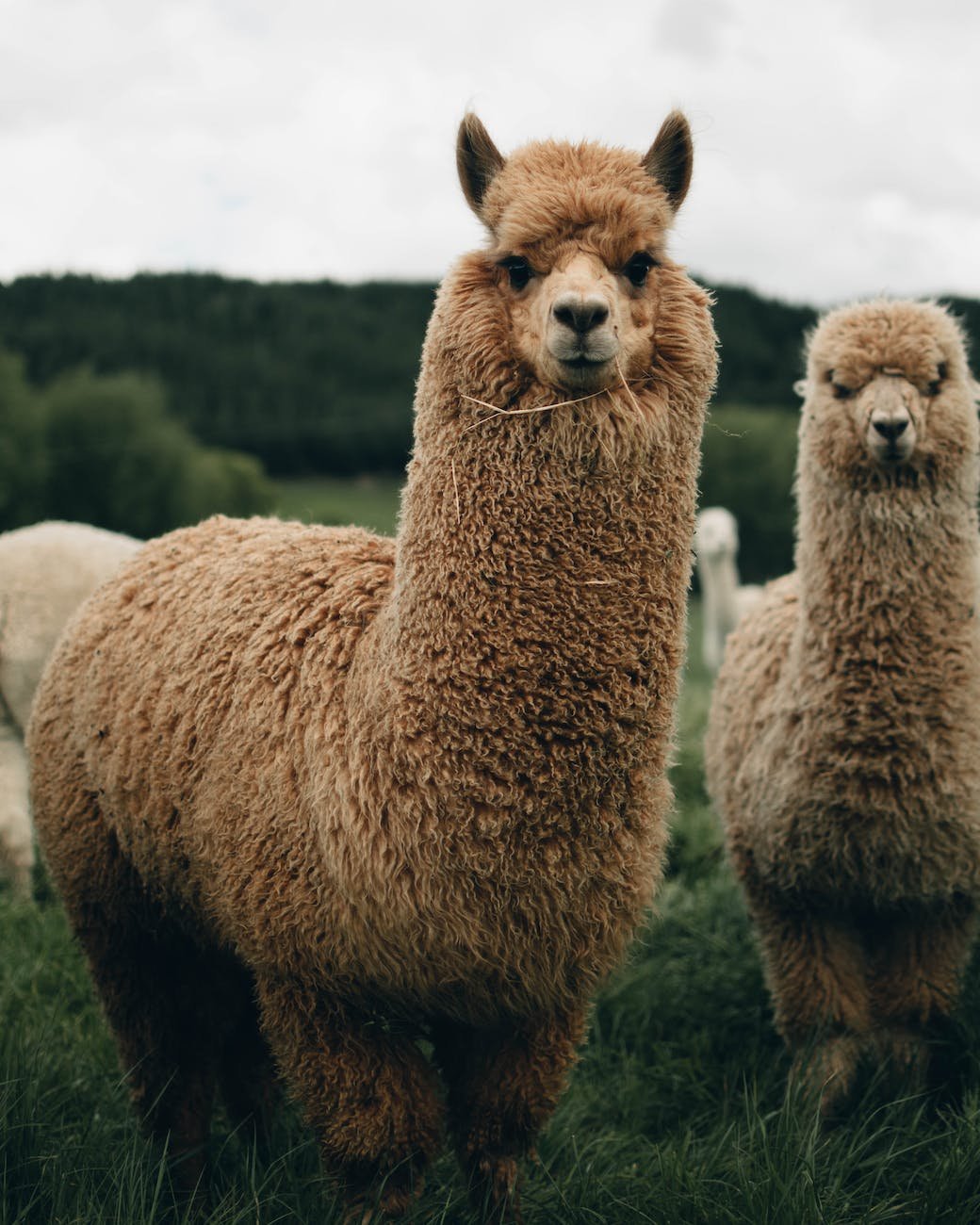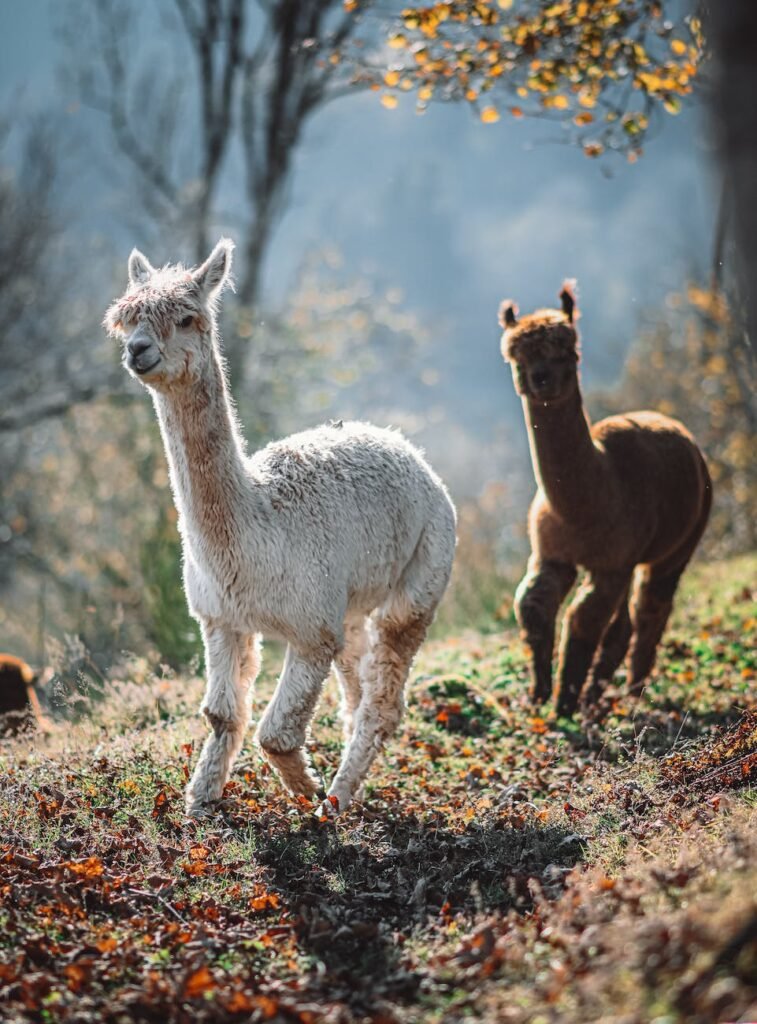Understanding Alpacas: A Deep Dive into their Kicking Behavior
Ever wondered if alpacas kick? I’ve spent years studying these fascinating creatures and I’m here to shed some light on this topic. Contrary to what you might think, alpacas aren’t as docile as they appear.
In my experience, alpacas can indeed kick, but it’s not a behavior they resort to often. It’s usually a defensive mechanism, a way for them to protect themselves when they feel threatened. Understanding their behavior can help you interact with them better, and that’s what we’ll explore in this article.
Key Takeaways
- Alpacas do kick, but it’s not their primary form of defense, and they do so mostly when they feel cornered or threatened.
- Generally, alpacas are not naturally aggressive animals. They’re typically peaceful and prefer to avoid confrontation.
- Alpaca kicking tends to be a last resort following a series of warning signs like ears pinned back, pacing, or loud, unusual vocal sounds.
- Alpacas seldom kick each other; instead they engage in ‘chest butting’ or ‘chest bumping’ for asserting dominance or playful interaction.
- Understanding alpaca behavior and following proper handling techniques can help to prevent kicks and make interactions with alpacas a wonderful, non-threatening experience.
- The alpaca’s warning signs should be recognized and understood to preempt possible kicks. Being patient, calm, and respectful of the alpaca’s space and comfort can ensure a safer interaction.
Do Alpacas Kick?
To dispel any myths or misunderstanding right away: Yes, alpacas do kick. It’s not their primary form of defense but it’s one that they’re capable of employing when they feel cornered or threatened. I’ve spent years observing and studying these creatures and I can tell you firsthand that an alpaca kick is not something you’d want to experience.
It’s essential to remember that alpacas are not naturally aggressive animals. They’re peaceful, gentle, and social creatures that prefer to run from threats rather than engage them head-on. In other words, if an alpaca does resort to kicking, it’s most likely because they feel they have no other option left to protect themselves.
My years of studying alpaca behavior have taught me that there are usual signs that signal an alpaca is feeling uncomfortable and may result in a kick. These may include ears pinned back against their head, pacing, or loud, unusual vocal sounds.
Even though it’s not as common, a cornered or frightened alpaca may swing its back legs forward in a swift, powerful kick. It’s a clear indication that they’re alarmed and we should respect their boundaries. They often aim for lower body parts such as the knees or shins and trust me: even if they’re gentle, their kicks pack a punch!
Interestingly, alpacas seldom kick each other. They engage in a behavior known as ‘chest butting’ or ‘chest bumping’ where they use their front bodies to ram into each other. This action, although appearing quite aggressive, is actually just a form of play or assertion of dominance.
As much as it’s clear that alpacas kick, it’s crucial to understand that they’re not doing it out of spite or without reason. Their behavior is a response to the environment around them and it’s our responsibility to ensure that we make them feel safe and secure. With the right handling techniques and patience, encounters with alpacas can be a wonderful, non-threatening experience.
The Misperception of Alpacas’ Docility
As a seasoned and dedicated alpaca enthusiast, it’s my mission to dispel misunderstandings about these beautiful creatures. One common misperception is their overarching docility. Alpacas are indeed gentle and generally versus violent actions, but it’s important to remember they aren’t pushovers! Just like you and me, these woolly beasts possess defensive instincts too. As we’ve explored in this fascinating tale of alpacas – they can and will kick when they feel threatened.
Kicks and Threat Perception
Alpacas are not random kickers! That sudden hind leg movement is their response to perceived danger, not a deliberate act of unprovoked aggression. Faced with unfamiliarity or a cornered situation, an alpaca’s instinct to protect itself kicks in – quite literally.
Observing signs of discomfort can paint a clearer picture of why the peaceful alpaca turns defensive. After all, wouldn’t you lash out if threatened and cornered? From pacing to unusual vocal noises, these creatures express their discomfort vividly. Pay special attention when their ears pin back – that’s a sure sign of their displeasure building up before potential retribution.
Alpaca Interaction and Chest Butting
One fascinating fact to consider is that these creatures rarely engage in kicking when interacting with each other. It’s a different ballgame for them! Alpaca-to-alpaca playtime usually involves a fun round or two of chest butting. For humans, it’s a naturally amusing spectacle; for alpacas, it’s an opportunity to assert dominance.
Patient handling techniques play a crucial role in ensuring your safety around alpacas. It’s all about careful observation, understanding their nature, and reacting accordingly. Let’s delve further into the right approaches.
The Occurrence of Alpaca Kicking
As we delve deeper into the behavior of alpacas, it’s important to grasp the frequency and occurrence of kicking in these captivating creatures. Recognizing patterns and frequency can make handling alpacas easier and safer.
To begin with, alpaca kicking is not habitual or common amidst their species. It’s a defensive maneuver, occurring primarily when they experience discomfort, fear, or agitation. In many scenarios, kicking is a last resort, usually implemented after displaying various warning signs such as pinned back ears, pacing, and unusual vocal sounds. This behavior paints a clear picture – alpacas, including those kept as pets, are not so different from their wild relatives who rely on these defense mechanisms in their natural habitats.

In alpaca herds, aggression is rare and they prefer other forms of communication. Chest butting is one such example – a non-violent approach used for play or asserting dominance. Apparently, kicking is more of an exception than a rule among alpacas.
The perception of frequency of alpaca kicking often results from misunderstanding their dormant defensive behaviors. Alpaca kicks are not arbitrary, they are responsive and tied to the environment and treatment they receive. For instance, mishandling or cornering an alpaca can invoke defense kicks. This explains why handlers with little knowledge or patience may experience more instances of alpaca kicking than seasoned, patient handlers.
The table below sheds light on a brief portrayal of links between potential triggers and alpaca kicks.
| Potential Triggers | Frequency of Alpaca Kicks |
|---|---|
| Discomfort | Medium to High |
| Fear/Threat | High |
| Agitation | Medium to High |
| Play/Dominance | Low |
With greater insight into alpaca behavior, we can comprehend, address, and mitigate the factors that may trigger kicking, creating an environment for these creatures that respects their peaceful and gentle nature. This understanding promotes not just the wellbeing of alpacas but also safety for human handlers.
Reasons Behind Alpaca Kicking
Let’s explore the next crucial question: why do alpacas kick? As we’ve established, alpaca kicking isn’t an everyday occurrence. However, understanding the cause can help us reduce any unnecessary discomfort for these creatures and provide a safer environment for people around them.
Just like many other animals, alpacas have a fight or flight response. They might resort to kicking when they’re cornered, feeling threatened, or experiencing pain. Improper handling or sudden movements can heighten an alpaca’s sense of threat, resulting in this defensive behavior.

Earlier, we mentioned warning signs such as pinned back ears, pacing, and unusual vocal sounds. These indicators can help you identify a potentially uncomfortable alpaca before a kick happens. Patience and calmness are essential when dealing with alpacas. Remember, they’re prey animals, and for them, a kick could be the last line of defense.
A study done by The Alpaca Owners Association showed the correlation between the discomfort or threat perceived by alpacas and their defensive response. Here’s a quick glance at the findings:
| Potential Triggers | Relative Kicking Frequency |
|---|---|
| Discomfort | High |
| Fear/Threat | High |
| Agitation | Medium |
Also, you’ll find that alpacas might kick during play or while asserting dominance. However, this behavior remains contained within the herd and rarely endangers handlers or other individuals present.
Understanding these underlying reasons helps us ensure better cooperation with alpacas, and in turn, solidifies the bond between us, while maintaining a respectful stance towards the animal’s comfort and well-being. Our understanding and actions can play a significant role in making the alpaca experience a pleasure for everyone involved.
This info won’t only improve our interactions with alpacas but also enrich our knowledge about these fascinating creatures. Now we’ll move onto discussing …
Interacting with Alpacas: Dos and Don’ts
Understanding the behavior of alpacas is vital. It helps us to create safer, more harmonious interactions with these creatures. Here are some crucial dos and don’ts to consider when interacting with alpacas.
Firstly, do approach alpacas calmly. They’re gentle creatures and respond best to quiet, composed behavior. Abrupt movements or loud noises might startle them, possibly triggering defensive behaviors like kicking.
Secondly, don’t invade their personal space without reason. Alpacas, especially those not used to frequent human interaction, can feel threatened when cornered. Allow them their personal space and approach them in a non-threatening manner.
Next in line, do recognize the warning signs mentioned earlier such as pinned back ears, abnormal pacing, and unusual vocal sounds. Paying attention to these signs would help preempt possible kicks.
Another important point to note is, don’t force interaction. Alpacas are social animals and they may interact on their own terms. Forcing interactions, especially if the alpaca’s warning signs are exhibited, can lead to unnecessary kicks and other defensive reactions.

Last, but not least, do use the right handling techniques and practice patience. It’s essential to show alpacas that we mean them no harm. Patience is key here.
While the occurrence of an alpaca kick is not common, knowing these dos and don’ts can prevent unnecessary incidents. This knowledge ensures better cooperation and a respectful stance towards the comfort and well-being of alpacas.
Bear in mind, this guide isn’t exhaustive. Always do your research or seek expert guidance before interacting with these beautiful creatures for an enriched experience.






Our picks
Alpaca & Wool Felted Sole Inserts: Comfy Upgrade?
Best Alpaca Socks for Hiking: Ultimate Comfort and Durability on Trails
Best Alpaca Halter for Comfort and Control